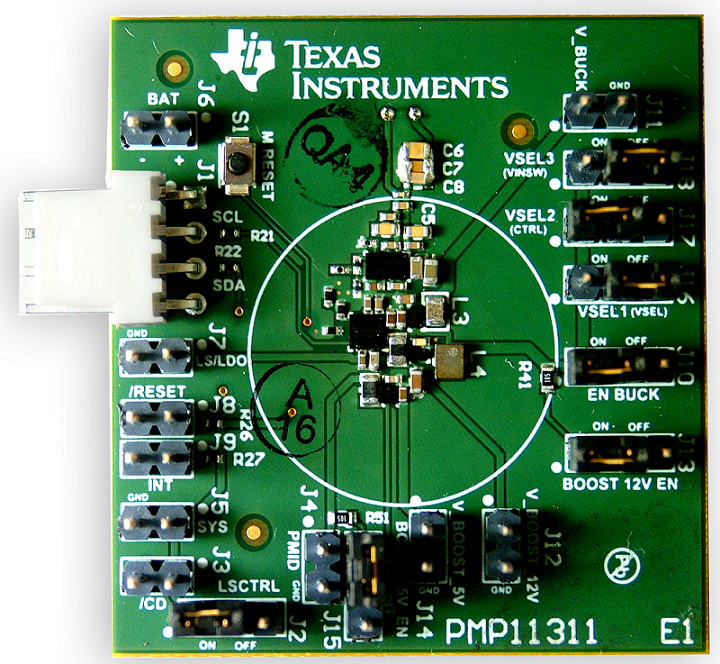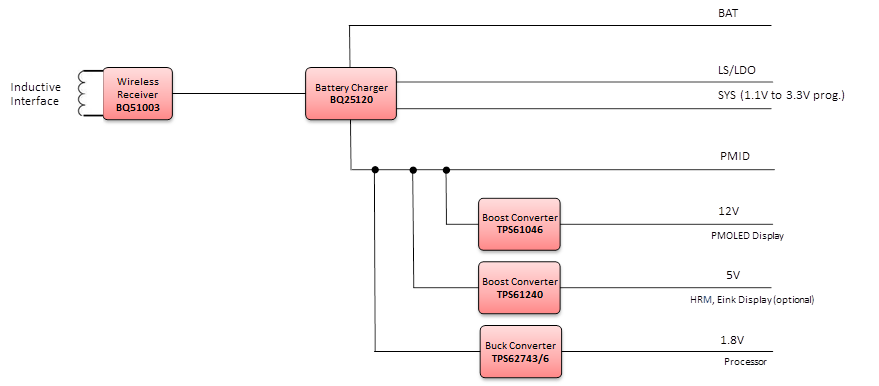SLUA748A December 2015 – April 2016 BQ25120 , BQ51003 , TPS61046 , TPS61240 , TPS62743
- Trademarks
- Power Management Reference Design for a Wearable Device with Wireless Charging Using the bq51003 and bq25120
- AExperimental Results
- Revision History
Power Management Reference Design for a Wearable Device with Wireless Charging Using the bq51003 and bq25120
Wearable devices require advanced power management to achieve long battery run times with always-on functionality. Additionally, the devices need to use small rechargeable batteries and enable small footprint designs. This application note shows the implementation of a scalable power management solution for wearables that can be tailored for activity monitors, watches, and more. The design provides a wireless charging input, highly configurable battery management solution with Li-Ion battery charger and low quiescent current (Iq) DC/DC buck, boost converter for PMOLED display, boost converter for Heart Rate Monitor (HRM), and low Iq DC/DC buck.
 Figure 1. PCB Top Assembly
Figure 1. PCB Top Assembly  Figure 2. Block Diagram of Wearable Power Management
Figure 2. Block Diagram of Wearable Power Management